What Is Gochujang? The Bold, Funky, Spicy Heart of Korean Cooking
- MyFreshDash

- Jul 25
- 5 min read
Updated: 20 hours ago

You know that red tub that shows up in K-drama kitchens or Korean food TikToks? The one that looks like it holds industrial-grade chili paste? That’s gochujang—and if you’ve ever tried it, you know it’s not just another condiment.
It’s spicy, sweet, earthy, funky, thick, and a little mysterious if you didn’t grow up with it.
We’ve seen it confuse people. We’ve seen it intimidate people. We’ve also seen people fall hard for it. So we decided to finally put together a guide that answers the big question: What actually is gochujang—and why do Koreans (and now, a lot of non-Koreans) treat it like magic?
Let’s talk about it.
🌶️ So… What Is Gochujang, Really?

Gochujang (고추장) is a thick, bright red chili paste made from:
Gochugaru (Korean chili flakes)
Meju powder (fermented soybeans)
Glutinous rice
Salt
Usually a touch of syrup or barley malt for sweetness
It’s fermented. It’s complex. And it’s not just spicy—it’s a whole vibe. You don’t just taste gochujang. You feel it.
It’s not the kind of heat that slaps you like hot sauce. It creeps in under the surface and wraps around your taste buds like a warm scarf dipped in umami and sugar.
🏺 A Short History (That’s Actually Worth Reading)
Long before it sat on shelves in red plastic tubs, gochujang was homemade—like, really homemade. Families in Korea would mix it by hand, ferment it for months or even years in massive clay jars called onggi, and each batch had its own flavor fingerprint.
If you ask older Koreans today, they’ll tell you:
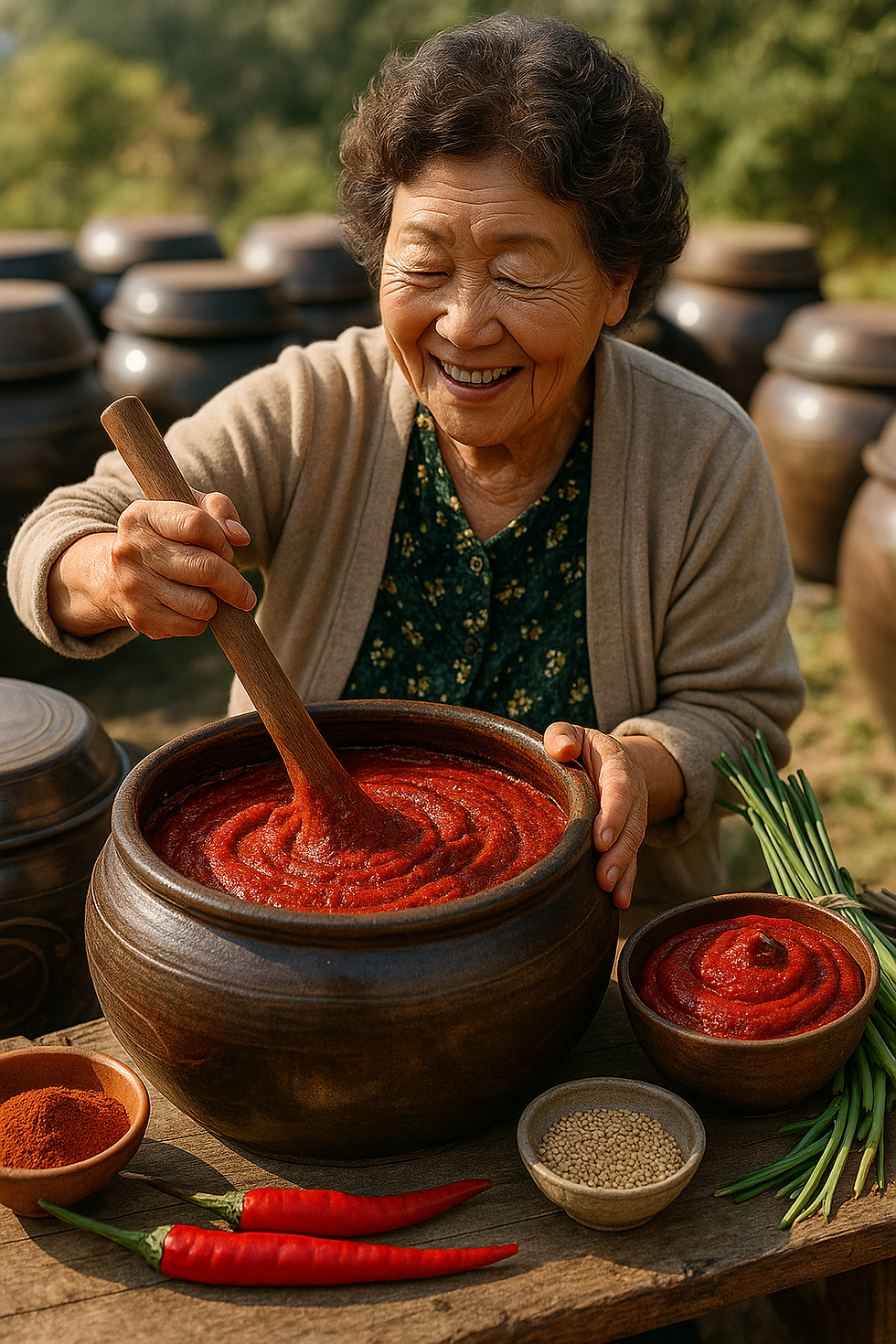
“My mom’s gochujang was different.” Or: “Ours was spicier.” Or: “Grandma’s was sweeter and smelled like spring onions.”
It wasn’t just food. It was part of the family.
Gochujang was used not just to season meals, but to stretch ingredients, to preserve flavor, to heal, and honestly, to survive winter. This stuff has depth.
Now, most people buy it from stores (like ours), but that cultural memory is still alive. It’s why gochujang is handled with respect—even when it’s just being squeezed onto fries or whisked into salad dressing.
🍳 What Do Koreans Actually Use It For?
Here’s the thing: gochujang isn’t a dip. It’s not ketchup. It’s not Tabasco. You don’t just glob it onto a plate (unless you’re 12 and rebellious).
Instead, it’s mixed into sauces, marinades, and stews. It adds depth, heat, and body to food.
Most common uses:
Bibimbap sauce – mixed with vinegar, sesame oil, sugar, garlic
Tteokbokki – spicy rice cakes drenched in gochujang-based glory
Spicy pork marinade – with garlic, ginger, soy, and gochujang
Stews (jjigae) – like gochujang jjigae with tofu and veggies
Cho-gochujang – thinned out with vinegar for cold noodles or seafood

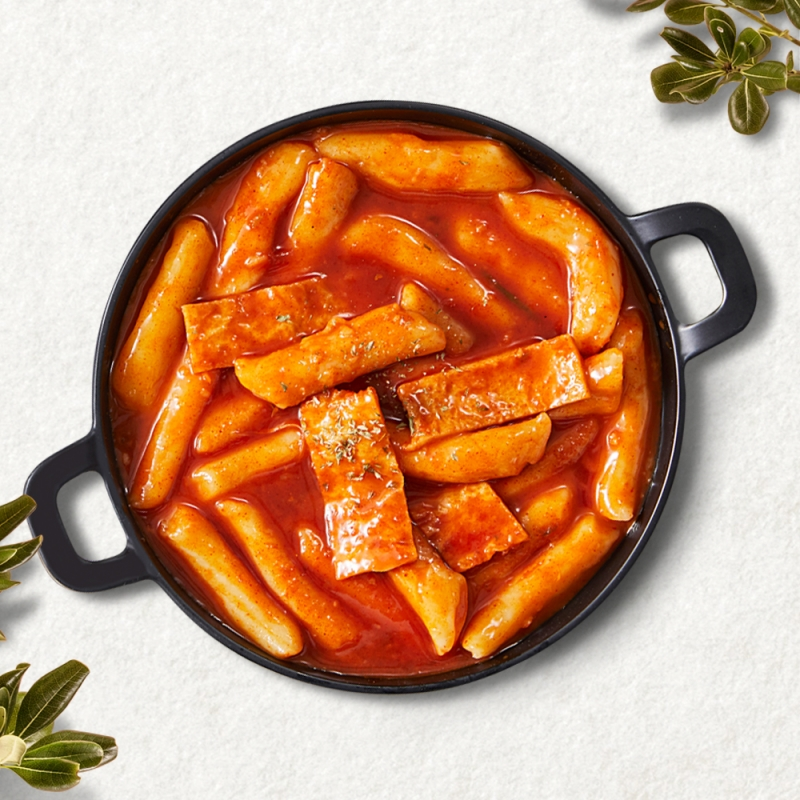
Outside of Korea? We’ve seen it in grilled cheese, on pizza, in butter, even mixed with peanut sauce. And you know what? It works.
🔥 How Spicy is Gochujang?

Gochujang is spicy—but not in a panic kind of way.
It’s not going to blow your head off (unless you use a lot). Gochujang builds slowly. It’s a cozy spice—more warming than searing. You’ll get heat, but it rides with sweetness and umami, like a group of friends who know how to balance each other out.
For spice scale reference (Scoville Heat Units):
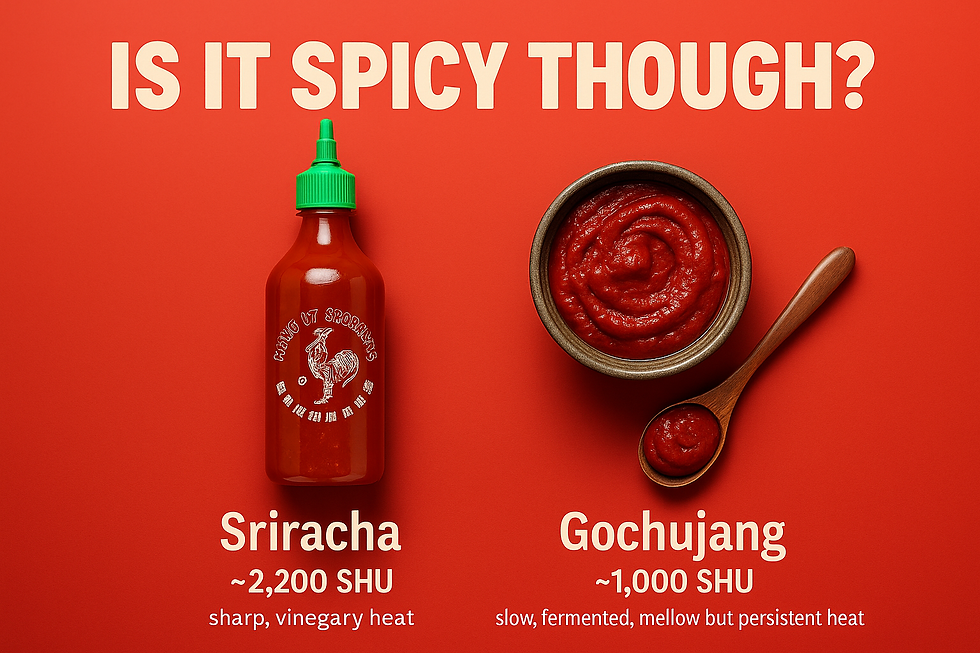
That might surprise people—gochujang is technically milder than Sriracha, but its richness and fermentation make it feel deeper and more intense in certain dishes.
Start small. Half a teaspoon in a sauce or marinade is plenty if you're just getting to know it.
🌶️ Not All Gochujang Is the Same!
There isn’t just one “standard” gochujang. There are different types, and they vary in heat and sweetness depending on:
The pepper ratio
How much rice syrup or sweetener is used
Fermentation time
Regional styles or brand preferences

Most commercial brands offer mild, medium, and hot versions (though this isn’t always clearly labeled in English). In Korea, you might see designations like:
순한맛 (mild)
보통맛 (medium)
매운맛 (hot)
Some traditional gochujang made at home or in small batches can be significantly spicier—or sweeter—than store-bought varieties.
🔥 Our Advice?
Start with medium. You can always level up. If you're new to gochujang, start with about half a teaspoon in your sauce or stew, taste as you go, and learn its rhythm.
It's not just about heat—it's about balance. Gochujang isn’t there to burn you. It’s there to elevate your food.
🤔 Which Korean Paste Is Right for You? (Hint: Probably All Three)

Let’s clear this up real quick:
Gochujang = chili paste
Doenjang = soybean paste (think salty miso but funkier)
Ssamjang = mix of the two + garlic, sesame oil, green onion (used for lettuce wraps and BBQ)
You want all three in your pantry eventually. But gochujang is the one you start with if you’re looking for flavor that changes your food with just a spoonful.
🧑🍳 How to Use Gochujang If You’re Not Korean (Yet)

We get it. You’re staring at this red tub thinking, “What now?”
Start with one of these:
Mix it into mayo → sandwich spread of the gods
Stir into soups for added soul
Toss it with roasted carrots or brussels sprouts
Whisk it into a glaze for grilled meats or tofu
Add it to your instant ramen (with an egg… just trust us)
Combine with soy, sugar, garlic = K-BBQ marinade magic
True story: one of our team members once made gochujang popcorn. Was it extra? Yes. Did we demolish it in 7 minutes? Also yes.
🛒 Where to Get It (And What to Look For)
Obviously, we’re biased—but if you want real-deal, made-in-Korea gochujang, you’ll find it at MyfreshDash.com.
Look for:
Gochugaru or chili powder listed early in the ingredients
No weird thickeners or food coloring
A balanced ratio of spice, rice, and sweetness
Some are hotter. Some sweeter. Some smoother. You might go through two or three brands before finding your soulmate.
❤️ Final Thoughts: This Isn’t Just a Paste. It’s Personality.
Here’s the thing about gochujang—it’s not just a flavor enhancer. It’s a mood enhancer. It takes whatever you’re making and gives it character. It’s bold. It’s layered. It’s a little dramatic. Basically… it’s a K-drama in a tub.
And like a great K-drama, once you’re hooked, there’s no going back. You’ll start putting it in everything. You’ll get that tub in your fridge and feel low-key proud of yourself. You’ll tell your friends about it. You’ll even start tweaking your scrambled eggs.
At MyfreshDash, we’re here to make those flavor discoveries easier. Whether you’re Korean, curious, or just ready to upgrade your kitchen, gochujang is one of those ingredients that opens doors.
Not just to food. To culture. To comfort. To spice that doesn’t scream—it speaks.
Ready to meet your new pantry MVP?
We’ve got the good stuff. And we’ll even help you figure out what to do with it.
Recommended from MyFreshDash
• Jeyuk bokkeum (spicy pork) — gochujang marinade in action.
• Soupy gochujang tteokbokki — snack-shop broth with the same base.
• Spicy tuna bibimbap (10 minutes) — fast rice bowl with gochujang.

.png)


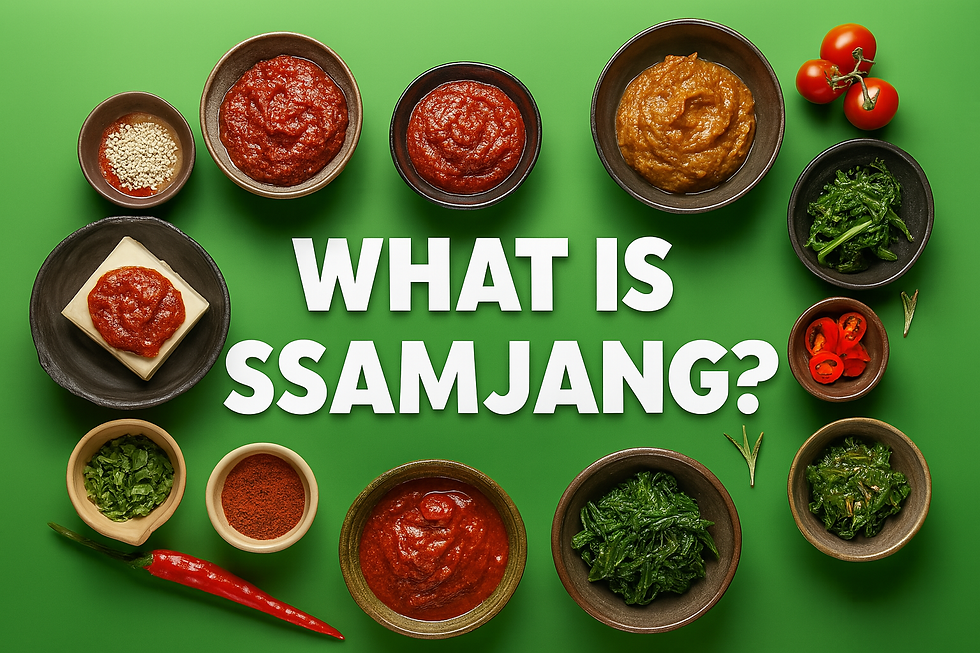
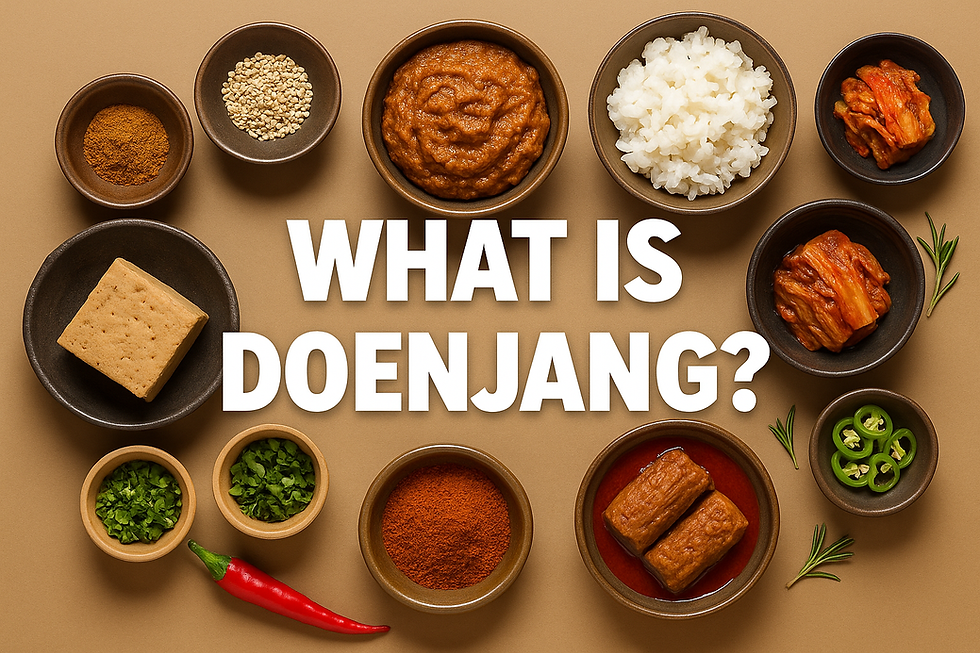
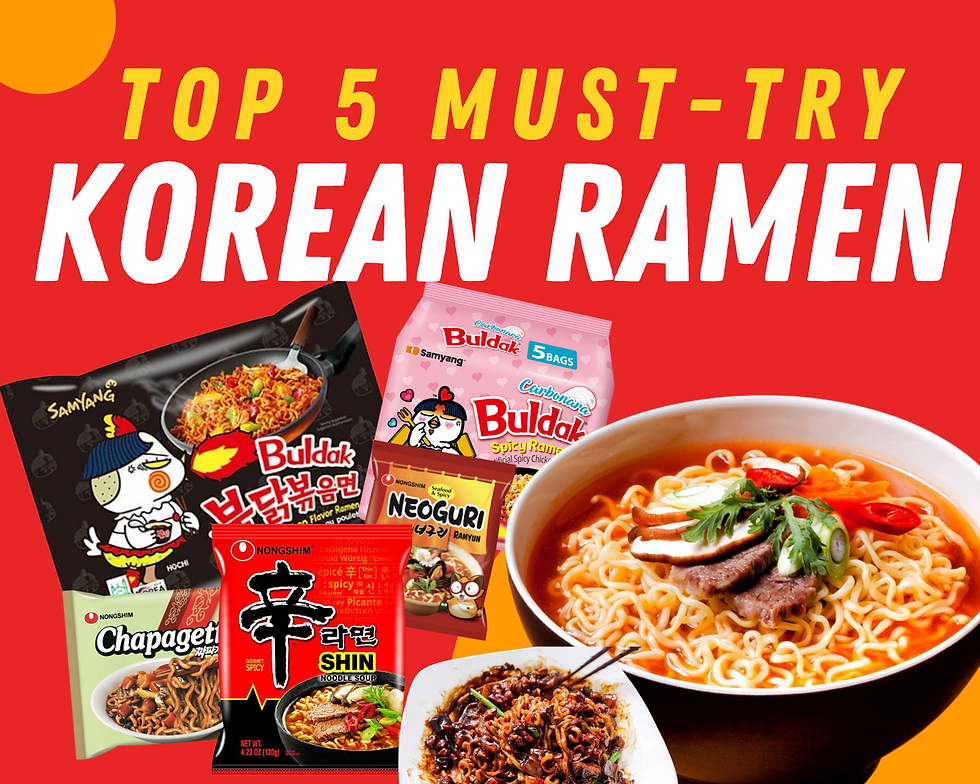
Comments